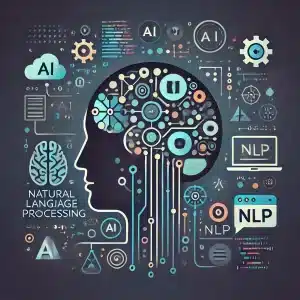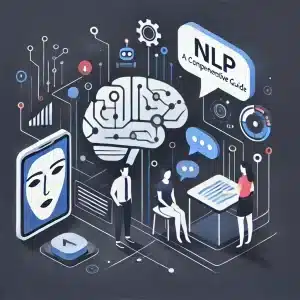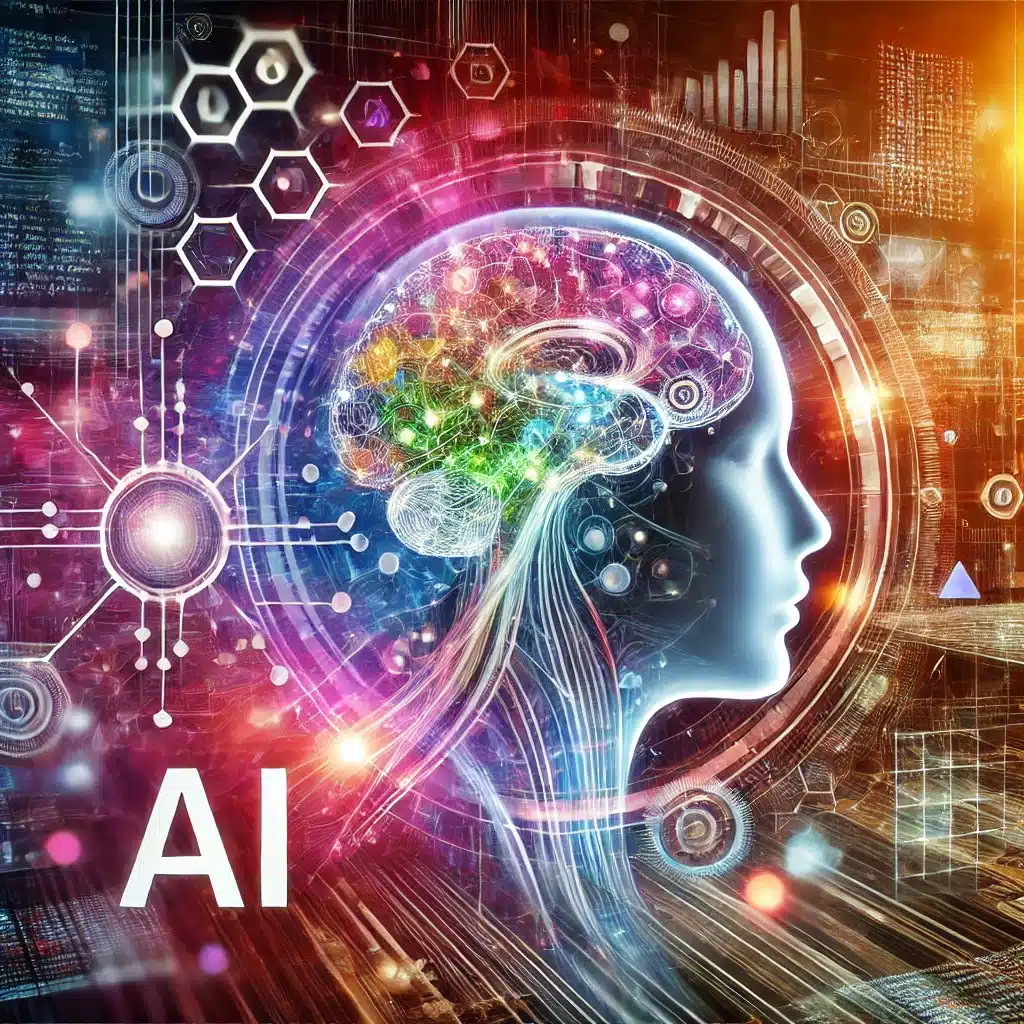Natural Language Processing (NLP) is a rapidly evolving field at the intersection of linguistics, computer science, and artificial intelligence (AI). It involves the development of algorithms and systems that enable computers to understand, interpret, and generate human language. The applications of NLP range from simple text classification to sophisticated machine translation systems like Google Translate, making it an indispensable technology in today’s digital world.
This comprehensive guide aims to unravel the complexities of NLP, shed light on its working mechanisms, applications, tools, and real-world implementations, and explore the challenges faced by developers in this field.
What Is Natural Language Processing (NLP) and Why Is It Important?
Understanding the Basics of NLP
Natural Language Processing is a subfield of artificial intelligence that enables computers to comprehend human language. Unlike traditional programming methods, which require structured input, NLP allows machines to understand the nuances of natural languages, making it possible to interact with technology in a conversational way.
NLP encompasses a variety of tasks such as text classification, sentiment analysis, machine translation, and speech recognition. For example, when you use voice assistants like Siri or Google Assistant, NLP is what allows the system to interpret your speech and respond accurately.
At the core of NLP is the idea that computers can learn the meaning behind words and phrases, allowing them to process and generate human-like text. This ability makes NLP an essential tool for transforming industries that rely on language, including customer service, content creation, marketing, and healthcare.
Key Applications of Natural Language Processing
NLP has an extensive range of applications across various industries. Here are some of the most impactful uses:
- Sentiment Analysis: Businesses use NLP to analyze customer reviews, social media posts, and surveys to gauge public opinion. By analyzing sentiments (positive, negative, neutral), companies can make data-driven decisions.
- Machine Translation: Google Translate is one of the most well-known examples of NLP in action. It enables seamless communication between individuals speaking different languages by automatically translating text or speech.
- Speech Recognition: Speech recognition, another pivotal application, enables voice-activated systems like Siri and Alexa to understand and execute user commands.
- Text Classification: NLP systems can automatically categorize text, such as sorting emails into different folders (e.g., spam vs. important emails) or organizing news articles by topic.
- Named Entity Recognition (NER): This NLP technique identifies entities such as people, places, organizations, and dates within a text. It’s essential for tasks like data mining and information extraction..
The Role of AI in Advancing NLP
AI, particularly machine learning and deep learning, has significantly advanced NLP. Machine learning algorithms can learn from text data and improve their performance over time without explicit programming. Deep learning models, especially neural networks like transformers, can handle complex tasks such as natural language generation and understanding with high accuracy. These learning algorithms have enabled the creation of large language models capable of performing a vast range of NLP tasks, from text generation to translation, making artificial intelligence an integral part of modern natural language processing systems.

How Does Natural Language Processing Work?
NLP Tasks and Their Functions
NLP encompasses a variety of tasks, each with specific functions. Processing tasks include tokenization, where text is divided into manageable pieces, and stemming, where words are reduced to their base forms. Text classification involves categorizing text data into predefined classes, while sentiment analysis determines the emotional tone of a text. Parsing helps breaking down a sentence to understand its grammatical structure, and named entity recognition identifies proper names within a text. These tasks collectively contribute to the computer’s ability to parse and interpret human language effectively.
The Role of Neural Networks and Deep Learning
Neural networks, especially deep learning models, play a crucial role in modern NLP. They are capable of learning the complex patterns in text data that are difficult to capture using traditional methods. Deep learning models such as transformers have enabled breakthroughs in language understanding and generation tasks. These models can handle large amounts of unstructured text and learn intricate relationships within the data, providing the backbone for advanced NLP systems. Generative AI, which uses these models, can create human-like text, enhancing the capabilities of applications like chatbots and virtual assistants.
Popular Programming Languages Used in NLP
NLP development heavily relies on programming languages that support machine learning and data analysis. Python is the most popular programming language in NLP due to its simplicity and extensive libraries such as Natural Language Toolkit (NLTK) and spaCy, which provide tools for text processing and analysis. Other languages like Java and R are also used in NLP, especially in academic research and industry applications where robust and efficient code is crucial. These languages provide the foundation for building and deploying NLP models and systems.
What Are the Common NLP Tools and Frameworks?
Overview of Popular AI Tools for NLP
Several tools and frameworks are commonly used in NLP projects. Here are some of the most popular ones:
- NLTK: One of the oldest and most comprehensive Python libraries for NLP. NLTK provides a range of functionalities for text processing, tokenization, parsing, and classification.
- spaCy: A more modern NLP library, known for its speed and efficiency. SpaCy excels in named entity recognition, part-of-speech tagging, and dependency parsing.
- TensorFlow and PyTorch: These deep learning frameworks provide the infrastructure needed for training large-scale models for tasks like sentiment analysis and text generation.
- BERT and GPT-3: These large pre-trained language models from Google and OpenAI, respectively, have set new benchmarks for NLP performance. They are capable of handling complex tasks such as question answering, summarization, and language translation.
How Can NLP Be Applied in Real-World Scenarios?
Use of NLP in Sentiment Analysis
Sentiment analysis is one of the most popular applications of NLP in the real world. Businesses use NLP to analyze customer reviews, social media posts, and feedback forms to understand customer sentiments and opinions about their products or services. By classifying text data into positive, negative, or neutral sentiments, companies can make informed decisions, improve customer satisfaction, and tailor their marketing strategies. Sentiment analysis tools leverage machine learning algorithms to automatically detect the emotional tone of a piece of text, providing valuable insights without the need for manual analysis.
Applications in Machine Translation
Machine translation, powered by NLP, allows for the automatic translation of text from one language to another. Systems like Google Translate use advanced language models to accurately translate text, making communication across different languages seamless. This application is essential in global business operations, enabling companies to reach a broader audience and communicate effectively in multiple languages. Machine learning methods and deep learning approaches have significantly improved the accuracy and fluency of machine translation, ensuring that translations are contextually accurate and natural-sounding.
Case Studies and Industry Examples
Real-world examples highlight the transformative impact of NLP across various industries. For instance, healthcare providers use NLP for medical text analysis, extracting valuable information from patient records and research articles to improve diagnostics and treatment plans. In finance, NLP is used for analyzing market trends and news articles to make informed investment decisions. E-commerce platforms leverage text classification and sentiment analysis to enhance customer service and personalize product recommendations. These case studies demonstrate the versatility and effectiveness of NLP in solving complex problems and driving innovation across different sectors.

What Challenges Do Developers Face in NLP and How Can They Overcome Them?
Common Obstacles in Natural Language Understanding
Despite its advancements, NLP still faces several challenges. One of the primary obstacles is dealing with the ambiguity and variability of human language. Understanding context, sarcasm, and idiomatic expressions can be difficult for NLP systems. Another challenge is the handling of unstructured text data, which requires sophisticated algorithms to process and interpret accurately. Developers also face issues related to bias in language models, which can lead to skewed or unfair outcomes. Addressing these challenges requires continuous improvement in algorithms, training data, and the overall architecture of NLP systems.
Overcoming Limitations with Large Language Models
Large language models, such as BERT and GPT, have shown promise in overcoming some limitations of traditional NLP techniques. These models can understand and generate text with a high degree of accuracy, thanks to their ability to learn from vast amounts of data. By fine-tuning these models for specific tasks, developers can achieve better performance in natural language understanding and generation. However, these models also come with challenges, including high computational costs and the risk of embedding biases from training data. Ensuring ethical and fair use of large language models is crucial for their effective deployment.
Conclusion
Natural Language Processing (NLP) has emerged as a transformative force in technology, unlocking new possibilities for businesses and industries alike. From enabling seamless communication between humans and machines to enhancing customer experiences through sentiment analysis and machine translation, the potential of NLP is immense. By leveraging NLP, companies can automate tasks, gain actionable insights from vast datasets, and make data-driven decisions that drive efficiency and innovation. However, despite its advancements, challenges such as handling ambiguous language, bias in models, and computational demands remain.
FAQs
What is Natural Language Processing (NLP)?
NLP is a branch of AI that focuses on enabling computers to understand, interpret, and generate human language. It involves tasks like sentiment analysis, machine translation, speech recognition, and text classification to bridge the gap between human communication and computer understanding.
How does NLP benefit businesses?
NLP enables businesses to automate tasks, enhance customer experiences, and gain actionable insights from text data. It helps in improving communication, personalizing interactions, analyzing sentiments, and automating processes like chatbots and content recommendations.
What are the common applications of NLP?
NLP is widely used in applications such as sentiment analysis, machine translation (e.g., Google Translate), chatbots, virtual assistants (e.g., Siri, Alexa), text classification (e.g., spam filtering), and named entity recognition for data extraction and analysis.
How does NLP work?
NLP works by processing and analyzing text or speech data through tasks such as tokenization, parsing, and sentiment analysis. Deep learning and machine learning algorithms, including neural networks, are used to improve the accuracy of NLP models by learning from vast amounts of language data.



